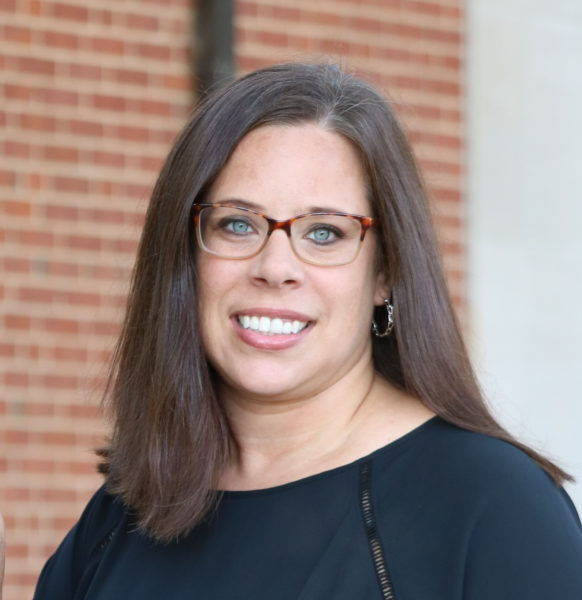Our Purpose and Decision-Making
At Burnley-Moran Elementary School our community—students, staff, and families—is one unit, which is reflected in our motto: one BME. The adults set the tone for the building.
The two of us started at the same time at BME—April was the new instructional coach and Elizabeth was the new building principal. The staff then was relatively new to Responsive Classroom practices. From day one, our afternoon meetings followed the Morning Meeting format in order to build our adult community and to engage in professional learning in a meaningful way. When planning what became known as our “staffternoon meetings,” we intentionally structured each component around our school goals, which were developed around collective efficacy, building and maintaining relationships, and Tier 1 instruction. We planned our meetings with two guiding questions in mind:
- What school goals do we want to address in our staffternoon time?
- How do we want staff to interact with each other and the content?
School Goal Planning
The instructional coach and administration mapped out our professional learning plan in weekly meetings. Our school goals anchored any and all connections in our staffternoon time. The timing of the year, data trends, and instructional observations determined which goals we would focus on. A key planning piece was to determine how the outcome related to the school goal. If we wanted teachers to have clarity in instructional planning, we needed to do the same for our staff professional learning.
Interactions
John Hattie’s visible learning research established the collective efficacy effect size as 1.57 (Visible Learning, n.d.). This research supports Responsive Classroom’s belief that how we work together as adults to create a safe, joyful, and inclusive school environment is as important as our individual contribution or competence.
Our adult community rests on the belief that we are as strong as the knowledge that we share together. Giving staff the opportunity to talk with one another and make their practice public not only provides them with the time to build relationships but also allows time for them to share instructional practices with one another. Interactive learning structures were used to better understand the content. If it was new content, we would use a familiar interactive learning structure such as foundational skill blocks. It was essential not to have both new content and new processes at the same time. For example, when we went schoolwide with interactive learning structures, our new learning was on the structures in order to keep the staff focused on their connections with one another.
Mini-Snapshots of Staffternoon Meetings
What follows are examples of the topics we discussed during our meetings. These snapshots cover the start of the year, ongoing professional learning, and yearly SMART goal discussions. In addition, at the end of the school year we provide staff with summer reading to ensure we are on the same page when we come back together in August to set the stage for our schoolwide goals.
Next Steps
Going forward, we plan to incorporate adult SEL needs and encourage more teacher leadership of our staffternoons.
Incorporating Adult SEL Needs. During the course of the pandemic we started to include adult social and emotional learning with a focus on self-awareness in the staffternoon meeting components. When we were virtual, our greetings and shares focused on staff being able to talk and connect more on nonschool-related tasks. This year our media specialist shared activities from Elena Aguilar’s Onward: Cultivating Emotional Resilience in Educators (2018) that provided us with different ways to take care of one another. We wanted staff to experience the same language and practices that they engaged in with their students, so we established a schoolwide daily greeting for checking in with students to see how they were doing that we also used with each other in our staffternoon meetings, and we followed the same mindfulness strategies that were taught to students during their guidance time.
Transitioning to Teacher Leaders. A deeper next step is to enable more teacher leadership in our staffternoon meetings. Up until now, administration, the instructional coach, and the math specialist have facilitated staffternoon meetings. Other specialists have sometimes facilitated designated parts of the meeting, as described earlier, to further develop collective efficacy. As we move forward, though, other staff members will be given opportunities to lead part or all of the staffternoon meetings.
Continuing On
As a school that believes in the value of the Responsive Classroom approach, we have found that it is essential for our leaders to set the example when utilizing our staff time together. Looking back through the years of staffternoon slides, one takeaway is evident: A clear understanding of the Morning Meeting format has allowed for incredible instructional leadership alignment and creativity. We encourage other school leadership teams to follow this process and see where the journey takes you.
See References Here

Elizabeth Korab
Elizabeth Korab, EdD, is the principal of Burnley-Moran Elementary School in Charlottesville, Virginia, and has previously held roles as a classroom teacher, instructional coach, assistant principal, and adjunct professor. Elizabeth has 15 years of experience in elementary education.

April Douglas
April Douglas is the instructional coach at Burnley-Moran Elementary School in Charlottesville, Virginia, and has previously held roles as classroom teacher, math specialist, and assistant principal. April has 22 years of experience in elementary education.
